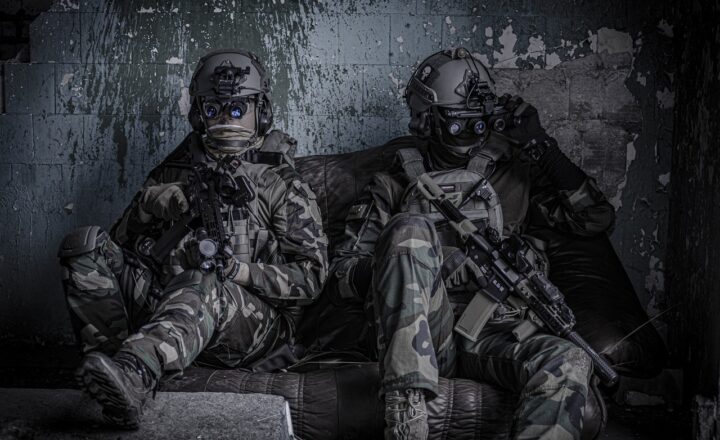How International Arms Trade Agreements Influence Global Power Dynamics
November 16, 2024

The global arms trade is a double-edged sword; while it provides countries with necessary defense mechanisms, it can also destabilize nations and foster conflicts. International arms trade agreements are pivotal in shaping how countries engage with one another, often influencing political relationships and altering the balance of power.
1. The Basics of International Arms Trade Agreements
International arms trade agreements are formal treaties between governments that govern the transfer of military arms and technologies. These agreements can take various forms, such as bilateral treaties, multilateral pacts, or memberships in international regulatory frameworks. They aim to promote transparency, accountability, and responsible behavior in the weapons trade.
The most notable among these treaties is the Arms Trade Treaty (ATT), which establishes international standards for the trade of conventional arms. It provides a framework to reduce arms trafficking while ensuring that states assess the potential risk of their arms exports.
2. Historical Context of Arms Trade Agreements
To understand the current landscape of international arms trade agreements, one must consider their historical evolution. The post-World War II era marked a significant increase in arms production and trade, particularly during the Cold War, where the U.S. and the Soviet Union engaged in a sustained arms race that influenced global alliances.
As emerging economic powers like China, India, and Brazil began to diversify their arms purchases, the global arms trade landscape transformed dramatically. The competition for influence in these emerging markets has led various nations to engage more actively in arms trading to solidify alliances.
3. The Influence of Arms Trade on Global Power Dynamics
Arms trade agreements can significantly influence global power dynamics in several ways:
– Alliances and Partnerships: Countries often engage in arms trade to bolster military partnerships, leading to stronger political alliances. For example, agreements between the U.S. and NATO nations have tightened their collective defense mechanisms and response capabilities.
– Economic Influence: Nations that are major arms exporters wield substantial power in global politics. Russia, for instance, has leveraged its position as one of the largest arms exporters to maintain influence in regions like Africa and the Middle East, often providing military assistance to stabilize allied regimes.
– Regime Stability: Arms trade can help strengthen regimes by providing them with the tools necessary to maintain order. However, it can also lead to human rights abuses when arms are provided to authoritarian regimes, influencing power dynamics within those nations.
– Conflict Proliferation: The supply of arms can escalate regional conflicts. For example, the proliferation of arms in the Middle East has exacerbated tensions, making it difficult for diplomatic solutions to take root and maintaining a continuous cycle of instability.
4. Case Studies: Arms Trade Agreements in Action
To illustrate the impact of arms trade agreements on global power dynamics, let’s examine a few noteworthy cases:
– The U.S. and Saudi Arabia: The U.S. has solidified its partnership with Saudi Arabia through significant arms sales, reinforcing the Kingdom’s position as a power broker in the Gulf. These agreements have not only strengthened the military capabilities of Saudi Arabia but have also assured U.S. influence in the region, especially in countering Iran’s ambitions.
– Russia’s Engagements in Africa: Russia has actively pursued arms agreements with various African countries, providing military support and weapons in exchange for political favor. This strategy enables Russia to expand its influence while counteracting Western dominance in the region.
– India and its Neighboring Countries: India’s arms agreements with countries like Bangladesh and Nepal have been crucial in establishing strategic partnerships. These agreements promote regional security against common threats, notably from Pakistan and China.
5. Challenges and Regulations of Arms Trade Agreements
While international arms trade agreements have frameworks intended to promote stability, several challenges persist:
– Compliance and Enforcement: Countries often fail to comply with the terms of arms trade agreements. Weak enforcement mechanisms lead to inconsistent application of regulations, creating loopholes that can be exploited.
– Illicit Trade: The illicit arms trade remains a significant challenge as countries develop sophisticated networks to circumvent legal agreements. This underground operation fuels conflicts around the globe.
– Lack of Transparency: Many arms deals occur behind closed doors, undermining the democratic processes and leading to public distrust. Increasing transparency in the arms trade is crucial for promoting accountability.
6. The Future of International Arms Trade Agreements
As global politics developed, so did the complexity of arms trade dynamics. With emerging technologies like drones, cyber warfare, and autonomous weapons systems, the landscape of arms trade will continue to evolve.
International cooperation will be vital in addressing the challenges posed by these technologies. New frameworks must be established to ensure responsible and ethical arms trading, focusing on human security and stability.
Conclusion
International arms trade agreements play an essential role in shaping the geopolitical landscape. They are key in maintaining alliances, regulating the flow of military technology, and significantly impacting regional and international stability. Although many challenges exist within the framework of these agreements, the goal remains clear: to promote peace, security, and stability in an increasingly complex world. As we move forward, enhancing global cooperation, transparency, and compliance will be critical in managing the arms trade to ensure it serves as a tool for fostering international stability rather than fueling conflict.








